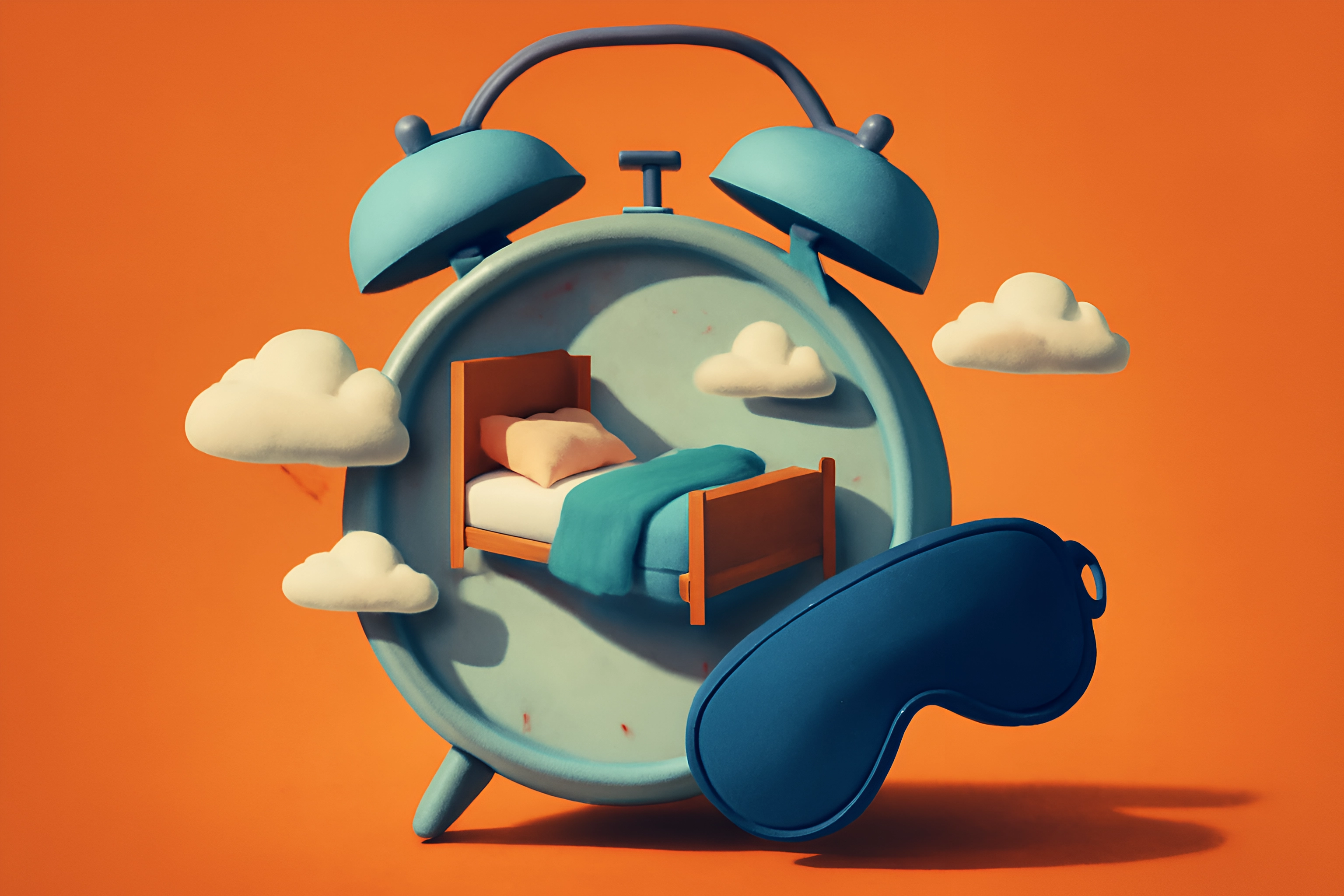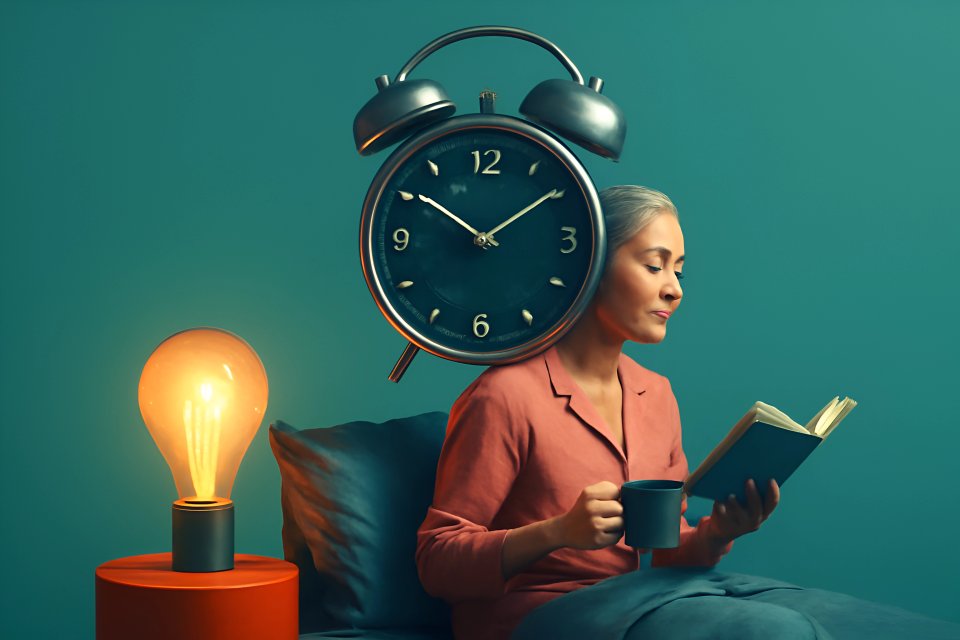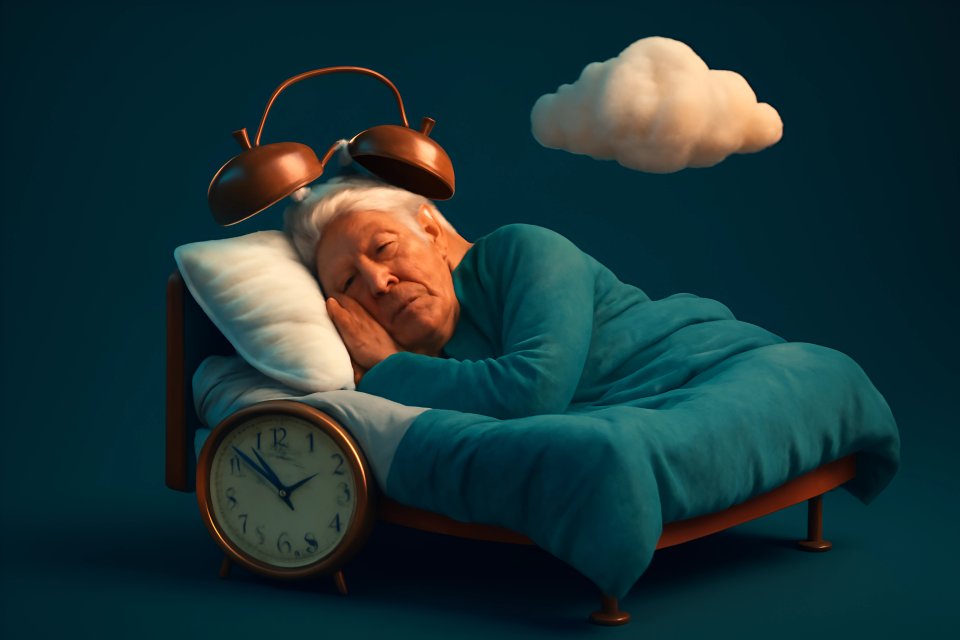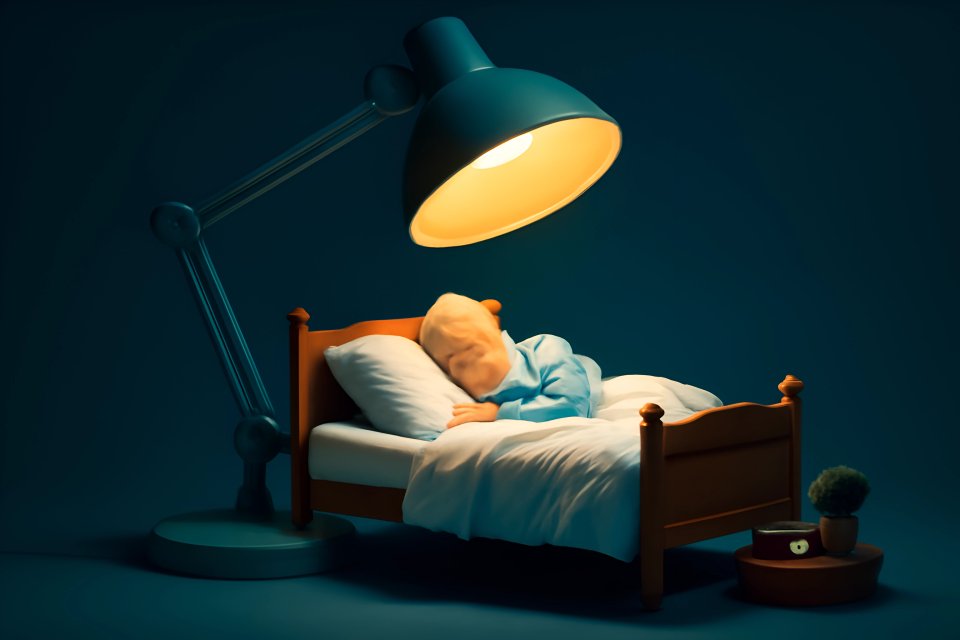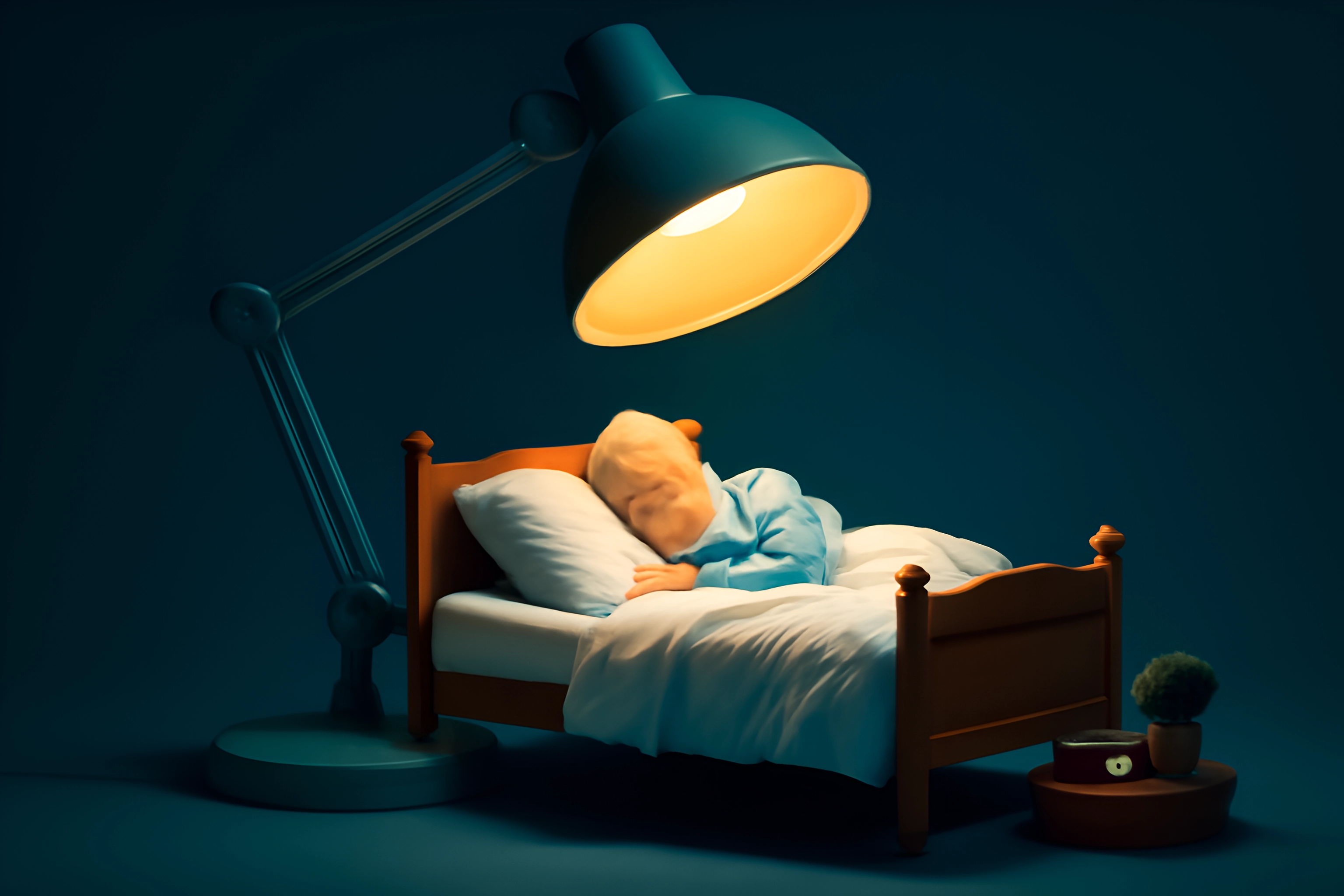
Does a full night of deep, restorative sleep feel more like a dream than a reality? You’re not alone. As we journey past 50, our sleep patterns can change, but that doesn't mean we have to settle for restless nights and exhausted mornings.
While factors like hormones and health conditions play a role, one of the most powerful tools for better sleep is often hiding in plain sight: your bedroom. This guide is dedicated to sleep environment optimization for seniors over 50. We’ll walk you through simple, practical steps to transform your bedroom from a place of tossing and turning into a sanctuary designed for deep, healing rest.
Forget complicated rules and expensive gadgets. We're going to focus on the five core pillars of a perfect sleep space: mastering darkness, cultivating quiet, finding your cool, building a comfortable nest, and breathing easy. Get ready to reclaim your right to a fantastic night's sleep.
Why Your Bedroom Environment Matters More Than Ever After 50
You’re not imagining it—your body is more sensitive than it was at 30. As we age, our sleep architecture changes, making us more susceptible to being woken by the slightest disturbance. According to the Sleep Foundation, older adults experience a decrease in deep sleep, meaning we spend more time in lighter stages where a car door slamming or a sliver of light can jolt us awake.
This heightened sensitivity makes your bedroom’s environment a critical factor in your overall health. Changes in body temperature regulation, such as hot flashes or feeling chilled, can shatter a sleep cycle. The aches and pains that come with a life well-lived demand a supportive mattress and pillows, not just for comfort, but to prevent waking up stiff and sore.
Ultimately, it comes down to a powerful mind-body connection. Your brain craves signals of safety and security to fully relax. A calm, uncluttered, and optimized space reduces underlying anxiety and tells your entire nervous system, "It's safe to rest now." This is where you take back control.
The 5 Pillars of a Restful Bedroom for Older Adults
Let's break down the five key pillars for creating your ideal sleep sanctuary. Think of these as your personal restful bedroom tips for older adults. Each one is a simple, actionable step toward the deep sleep you deserve.
1. Master the Darkness: Control Your Light Exposure
Light is the most powerful signal that tells your brain to be awake. Exposure to light, especially the blue light from screens, actively suppresses the production of melatonin, the essential hormone that governs your sleep-wake cycle. To get truly restorative sleep, your bedroom needs to be a cave of darkness.
Your first line of defense is a set of high-quality blackout curtains or blinds. This is the single most effective way to block intrusive streetlights, passing headlights, and the early morning sun that can cut your sleep short. The goal is a room so dark you can barely see your hand in front of your face, creating an environment that promotes uninterrupted melatonin production.
Next, you must hunt down and eliminate every source of electronic glow. That blinking charging indicator, the bright numbers on your digital clock, and the standby light on your television are all silent sleep thieves. Cover them with electrical tape or, better yet, follow the advice of experts and remove distracting electronics from the bedroom entirely. For nighttime safety, use a dim, motion-activated nightlight with a warm, red-hued bulb, which is far less disruptive to your sleep cycle than blue or white light.
2. Cultivate Quiet: Manage Your Soundscape
Just as light can disrupt sleep, unexpected noises can easily pull you from the lighter stages of rest. A partner’s snoring, a neighbor's late-night TV, or traffic from the street can fragment your sleep without you even fully realizing it. The mission is to create a consistent and soothing soundscape that protects your peace.
A white noise machine is a game-changer for masking these disruptive sounds. It works by creating a constant, ambient sound—like rushing air or gentle rain—that makes sudden noises less jarring. A simple fan can achieve a similar effect, providing the dual benefit of air circulation.
If you're dealing with a particularly noisy environment or a snoring partner, don't underestimate the power of simple, comfortable earplugs. A peer-reviewed study published by the National Institutes of Health found that noisy bedrooms were significantly associated with insomnia symptoms in older adults. You can also soften the room's acoustics by adding heavy curtains, plush area rugs, and upholstered furniture, which help absorb sound and reduce echoes, turning your bedroom into a quieter, more serene space.
3. Find Your Cool: Perfect the Bedroom Temperature
Have you ever kicked the covers off in the middle of the night? That's your body's natural sleep mechanism at work. To initiate sleep, your core body temperature needs to drop slightly, and a cool room helps facilitate this essential biological process.
Research from the Marcus Institute for Aging Research suggests an optimal sleep temperature for seniors is between 68 and 77 degrees Fahrenheit, while other experts often recommend a slightly cooler range of 60-67°F. The key is to experiment and find what feels best for you. Setting your thermostat to a cool, comfortable temperature is one of the most effective ways to signal to your body that it's time for bed.
Your choice of bedding and sleepwear is just as important. Ditch heavy, synthetic fabrics that trap heat and opt for natural, breathable materials like cotton, linen, or bamboo. These fabrics wick moisture away from your body, preventing you from waking up overheated. A ceiling or standing fan can also work wonders by improving air circulation and creating a gentle, cooling breeze.
4. Build Your Nest: Comfort, Support, and Safety
Your bed should be a haven of comfort, not a source of aches and pains. This pillar is all about creating a space that physically supports your body while ensuring your safety throughout the night. These are some of the most crucial senior sleep environment ideas you can implement.
Start by evaluating your mattress and pillows. If your mattress is over eight years old or you wake up with back or joint pain, it's time for an upgrade. A medium-firm mattress often provides the best balance of support and pressure relief. Your pillow should support the natural curve of your neck; side sleepers generally need a thicker, firmer pillow, while back sleepers do better with a flatter one. Addressing the root cause of discomfort is essential, and you can find more strategies in our guide to holistic approaches to joint health.
A tidy room promotes a tidy mind. Clutter, especially work-related items or exercise equipment, can create a subtle sense of stress and anxiety. Remove anything that doesn't contribute to rest and relaxation. This simple act reinforces the bedroom's singular purpose: to be a sanctuary for sleep.
Finally, prioritize your safety. Ensure the pathway from your bed to the bathroom is completely clear of obstacles to prevent nighttime falls, a critical concern for older adults. As recommended by senior care experts, using nightlights and securing loose rugs are simple but vital safety measures. Your bedroom should be a place where you feel completely secure.
5. Breathe Easy: Air Quality and Calming Scents
The final touches on your sleep sanctuary involve the air you breathe and the scents that surround you. These subtle elements can have a profound impact on your ability to relax and drift off to sleep. They are the invisible keys to a truly restful atmosphere.
Start by ensuring good air circulation. Whenever possible, open your windows during the day to let fresh air in and flush out stale, stagnant air. If you suffer from allergies or live in an area with poor air quality, consider investing in a HEPA air purifier to remove dust, pollen, and other allergens that can irritate your respiratory system and disrupt sleep.
Scent can be a powerful tool for relaxation, but it should be used sparingly. A light spritz of lavender linen spray on your pillow or a diffuser with calming essential oils like chamomile can signal to your brain that it's time to wind down. For a deeper dive into this topic, explore our guide on using aromatherapy and light therapy to enhance sleep quality. Always be mindful of any personal sensitivities to strong fragrances.
Your Pre-Sleep Sanctuary Checklist: A 30-Minute Wind-Down
Transforming your bedroom is the first step. The next is creating a simple, repeatable routine to prepare your environment—and yourself—for a night of deep rest. Use this checklist every night to signal that sleep is on its way.
- [ ] Adjust the thermostat to your ideal cool temperature.
- [ ] Draw the blackout curtains, ensuring complete darkness.
- [ ] Turn off bright overhead lights and switch to a dim lamp.
- [ ] Turn on your white noise machine or fan.
- [ ] Put your phone on silent and place it away from the bed.
- [ ] Tidy one small thing (e.g., fold a piece of clothing).
This simple ritual is a powerful complement to your optimized environment. For more ideas, check out our post on practical evening routines for restful sleep.
Conclusion
You don't have to accept poor sleep as an inevitable part of aging. By taking control of your environment, you can create the ideal conditions for your body and mind to get the deep, restorative rest they need. A dark, quiet, cool, comfortable, and safe bedroom isn't a luxury—it's a cornerstone of your health and vitality.
Creating a restful bedroom isn't about expensive gadgets or complicated rules. It's about taking small, intentional steps to reclaim your right to a good night's sleep. You have the power to build a sanctuary that supports your health, energy, and vitality for years to come.
What is one change you are going to make to your sleep environment this week? Share your favorite tip in the comments below—we can all learn from each other.








